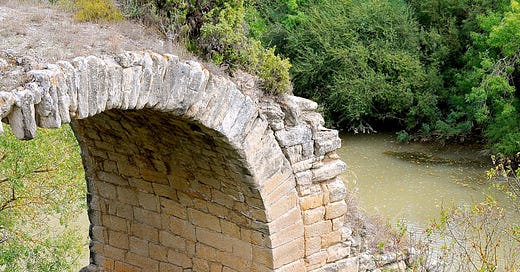This piece is the beginning on a collection of short essays on food, food systems, and rekindling relationships with the land around us. What does it mean to build an identity when our cultural identity is inevitably lost in an increasingly globalized, nomadic world? How do we find ways to create genuine identity and community?
The collection that this is a part of started nearly a decade ago, long before the Poor Proles Almanac was even an idea. I feel that the collection reflects how our evolution and relationships with the living and non-living world around us orbits around a fundamental question of what humanity means in a world where we’re increasingly alienated from the interdependencies which humans have existed within for our entire existence. The challenge of finding place, purpose, and context for our existence has never been harder, and addressing it is a slow, painful, and iterative process bordering on the obsessive.
With that said, I hope you enjoy this piece and would love to know if you’d want to read more from this collection.
.
Awareness has infinite gradations, like light.
-Ignazio Silone, “Bread & Wine”
A petrified ring of oak peek up from the soil alongside what remains of the heartwood of another ancient oak; I trace its circumference with my index finger and stop just short of the trail of roots reaching back up to what was also once another stump. The trunk suggests the tree had been around 60 years old, and the decay reflects at least twenty summers and winters. The circular pattern of the three stumps writes a history more ancient; they had been shoots from an older, larger tree, with a diameter north of three feet. I calculate quickly; 300 years at the youngest. I gaze out into the woods, the white pine needles bristling with the slightest caress of the wind. The pole pines had dropped their lower whorls as they stood shoulder to shoulder, climbing towards the sun, and I try to find where one of the oak trees had fallen so many years before.
Knowing the history of the region, if you can estimate the rough age of a tree coming down, you’re able to figure out which storm took it down and sometimes even identify the trees which were nursed by the fallen trunk. The shoots had likely come down during the perfect storm of 1991, which would put their original sprouting around 1930, meaning the original tree that had heard the whisperings of revolution and emancipation from the King had likely come down during the famous Great New England Hurricane of 1938. I tried to imagine what it must have been like to see such a historic behemoth drop from the sky in the midst of massive flooding, and I snap back to the present as a warm breeze presses against my exposed skin.
Farming is an exercise in transience. We work the land, understand its history and prepare for the future. Reading that history takes time. It takes years, decades, and it takes patience. I think back to the years listening to my grandfather ruminating as he touched the leaves of the grape vines that sheltered us from the sun in the deep summer. What he learned from the way he rubbed his thumb across the fuzz of the leaves, I’m still not sure— he may have just enjoyed the connection with his vine— but it became as much a part of him as harvesting the grapes and later deciding what to do with them. What was so obvious to him now is a distant memory that never translated to me. A great farmer is like a savvy financier; he learns every inch of what he owns and what he needs to produce in excess before learning where to spend it. A great farmer understands that what he owns isn’t his, but rather he is a temporary caretaker in what hopefully will be many generations of caretakers, each benefiting from the work of previous generations and contributing to the greatness of future generations.
Keep reading with a 7-day free trial
Subscribe to The Poor Prole's Almanac: Restoration Agroecology to keep reading this post and get 7 days of free access to the full post archives.



